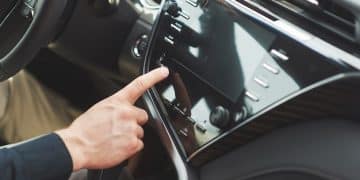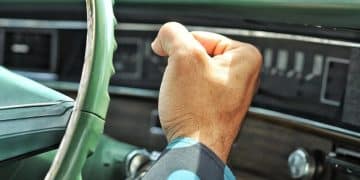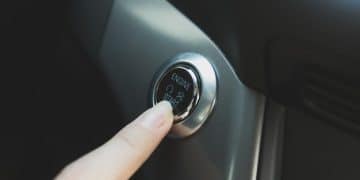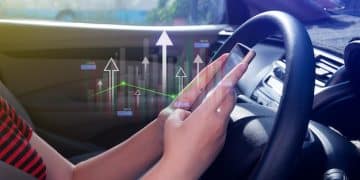Gesture Control in Cars: Gimmick or Genuine Safety Feature?
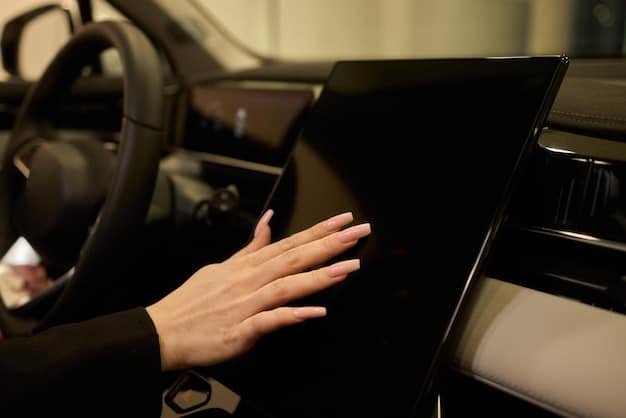
Gesture control in cars aims to enhance safety and convenience by allowing drivers to manage certain functions without physically touching controls, but its effectiveness and practicality are debated, leading to questions about whether it’s a valuable feature or just a gimmick.
Is gesture control in cars a glimpse into the future of driving, or just another flashy feature destined to be forgotten? Automakers are increasingly incorporating gesture recognition technology, promising to enhance safety and convenience. But does it truly deliver on these promises?
Understanding Gesture Control Technology in Automobiles
Gesture control technology in cars is designed to allow drivers to interact with various vehicle systems using hand movements. This technology aims to reduce driver distraction and enhance safety by minimizing the need to touch physical buttons or screens.
How exactly does this technology work? Typically, infrared cameras or sensors are embedded in the car’s dashboard or steering wheel. These sensors detect and interpret specific hand gestures, translating them into commands for the vehicle’s infotainment system, climate control, and other functions.
Key Components of Gesture Recognition Systems
Several components work together to enable gesture control in cars:
- Sensors: Infrared cameras or other sensors capture the driver’s hand movements.
- Processing Unit: A dedicated processor analyzes the data from the sensors, identifying specific gestures.
- Software: Sophisticated algorithms interpret the gestures and translate them into commands for the vehicle’s systems.
- User Interface: The car’s infotainment system or display provides feedback to the driver, confirming that the gesture has been recognized and the command executed.
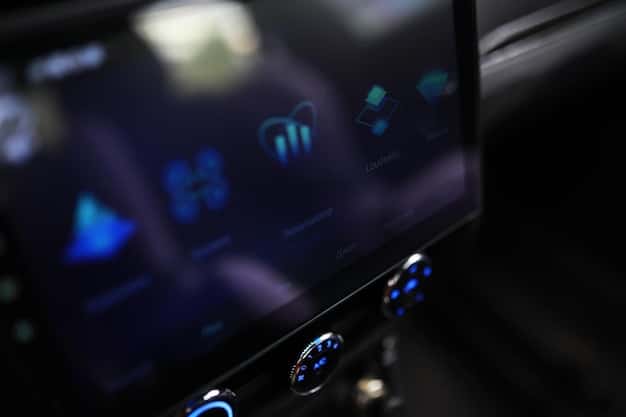
Common Gestures and Functions
While the specific gestures may vary depending on the car manufacturer, some common gestures include:
- Volume Control: Swiping your hand left or right to adjust the volume.
- Call Management: Pointing to accept a call or swiping to decline.
- Navigation: Rotating your hand to zoom in or out on the map.
- Menu Navigation: Waving your hand to scroll through menus.
The ultimate goal of gesture control in cars is to create a more intuitive and safer driving experience. By minimizing the need for physical interaction with the car’s controls, drivers can keep their eyes on the road and reduce the risk of accidents.
The Promise of Enhanced Safety: Does Gesture Control Deliver?
The primary argument in favor of gesture control in cars revolves around safety. Proponents suggest that by reducing the need for drivers to take their eyes off the road, this technology can significantly decrease the risk of accidents.
How does gesture control contribute to safer driving? The idea is that simple hand movements are less distracting than reaching for and manipulating physical controls. This is especially relevant for frequently used functions such as adjusting the volume or answering phone calls.
Studies on Driver Distraction
Several studies have examined the impact of driver distraction on road safety:
- Research indicates that taking your eyes off the road for even a few seconds can significantly increase the risk of a collision.
- Studies have shown that tasks such as adjusting the radio or using a smartphone can impair driving performance and reaction time.
- The National Highway Traffic Safety Administration (NHTSA) estimates that distracted driving is a factor in a significant percentage of car accidents each year.
Gesture Control as a Solution?
The question is, does gesture control effectively mitigate these risks? While the technology has the potential to reduce distraction, its effectiveness depends on several factors, including:
- Accuracy: The system must accurately recognize and interpret gestures.
- Reliability: The system must work consistently under various driving conditions.
- Ease of Use: The gestures must be intuitive and easy to remember.
If the system is unreliable or difficult to use, it could actually increase driver distraction. For instance, if a driver has to repeat a gesture multiple times before it is recognized, this could be more distracting than simply using a physical control.
Ultimately, the safety benefits of gesture control in cars depend on its implementation and how well it integrates into the driving experience. A poorly designed system could negate any potential safety advantages.
Convenience vs. Complexity: The User Experience
Beyond safety, convenience is another key selling point of gesture control in cars. The idea is that drivers can easily manage various functions without having to fumble with buttons or navigate complex menus.
However, the user experience is not always as seamless as advertised. Some users find that the gestures are not always intuitive or easy to remember. Others report that the system can be unreliable, failing to recognize gestures accurately.
The Learning Curve
One challenge is the learning curve associated with gesture control. Drivers need to learn and remember the specific gestures required to perform different functions. This can be especially challenging for those who are not tech-savvy or who are used to traditional controls.
Potential for Errors
Another issue is the potential for errors. If the system misinterprets a gesture, it could execute the wrong command. This could be frustrating or even dangerous, especially if it affects critical functions such as climate control or navigation.
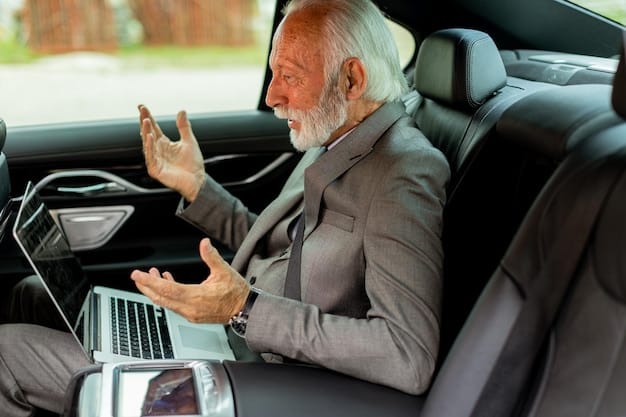
Real-World Use Cases
To evaluate the user experience, it’s helpful to consider some real-world use cases:
- Adjusting the Volume: A driver might use a swiping gesture to turn up the volume while listening to music. If the system works well, this could be a convenient way to manage the audio without taking their eyes off the road.
- Answering a Call: A driver might point to accept an incoming call. If the system recognizes the gesture quickly and accurately, this could be a safer way to handle phone calls while driving.
- Changing the Climate Control: A driver might use a rotating gesture to adjust the temperature. However, if the system is unresponsive or difficult to use, this could be more distracting than simply using the physical controls.
In conclusion, the convenience of gesture control in cars depends on its reliability, ease of use, and how well it integrates into the overall driving experience. A poorly designed system could actually make driving more complex and frustrating.
The Role of E-E-A-T in Evaluating Gesture Control Systems
E-E-A-T, which stands for Experience, Expertise, Authoritativeness, and Trustworthiness, is a set of guidelines that Google uses to evaluate the quality of online content. These principles are particularly relevant when assessing the value and credibility of new technologies like gesture control in cars.
Applying E-E-A-T to gesture control systems involves considering several factors. First, it’s important to evaluate the experience of users who have actually used the technology. What are their real-world experiences? Do they find the system to be useful and reliable?
Assessing Expertise
Expertise is another important consideration. Are the claims made about the technology supported by scientific evidence and data? Are the developers and manufacturers recognized experts in their field? It’s important to look for evidence of expertise when evaluating the potential benefits and drawbacks of gesture control systems.
Establishing Authoritativeness
Authoritativeness refers to the credibility and trustworthiness of the sources providing information about the technology. Are the claims made by independent reviewers and experts? Or are they solely based on marketing materials from the manufacturers? It’s crucial to rely on authoritative sources when assessing the technology’s true value.
Ensuring Trustworthiness
Trustworthiness is the final component of E-E-A-T. It involves assessing the overall reliability and integrity of the information provided. Are the claims made transparent and verifiable? Are there any conflicts of interest that could undermine the trustworthiness of the information?
In summary, applying the principles of E-E-A-T to gesture control in cars can help you make an informed decision about whether the technology is a genuine safety feature or just a gimmick. By considering the experience of users, the expertise of developers, the authoritativeness of sources, and the trustworthiness of information, you can assess the technology’s true value and potential impact.
The Future of Gesture Recognition in Automotive Technology
The future of gesture control in cars looks promising, with ongoing advancements in technology and increasing adoption by automakers. As the technology matures, it is likely to become more accurate, reliable, and intuitive.
What are some of the potential future developments? One possibility is the integration of artificial intelligence (AI) and machine learning (ML) to enhance gesture recognition capabilities. AI-powered systems could learn to recognize individual driver’s gestures and adapt to different driving conditions.
Potential Advancements
Some specific advancements that could shape the future of gesture control include:
- Improved Accuracy: Advances in sensor technology and AI algorithms could lead to more accurate gesture recognition, reducing the potential for errors.
- Enhanced Reliability: More robust systems could work consistently under various driving conditions, including different lighting and weather conditions.
- Personalized Gestures: AI-powered systems could learn to recognize individual driver’s gestures and preferences, creating a more personalized driving experience.
- Integration with Other Systems: Gesture control could be integrated with other advanced driver-assistance systems (ADAS) to create a more seamless and intuitive driving experience.
Challenges and Opportunities
Despite the potential benefits, there are also challenges to overcome. One challenge is ensuring that the technology is safe and reliable under all driving conditions. Another challenge is making the technology affordable and accessible to a wide range of drivers.
However, the opportunities are significant. As gesture control in cars becomes more advanced and widespread, it has the potential to transform the driving experience, making it safer, more convenient, and more enjoyable.
The key to unlocking the full potential of gesture control is to focus on user-centered design, ensuring that the technology is intuitive, easy to use, and truly enhances the driving experience.
Real-World Examples of Cars with Gesture Control
Several automakers have already incorporated gesture control in cars into their vehicles, showcasing the growing interest in this technology. These real-world examples provide insights into how gesture control is being implemented and its potential impact on the driving experience.
Which car models currently offer gesture control? Some notable examples include BMW, Audi, and Mercedes-Benz. These automakers have integrated gesture recognition technology into their infotainment systems, allowing drivers to control various functions with hand movements.
BMW
BMW was one of the first automakers to introduce gesture control in its vehicles. The BMW Gesture Control system allows drivers to control functions such as volume, phone calls, and navigation with simple hand movements. The system uses a 3D sensor in the center console to detect and interpret gestures.
Audi
Audi has also incorporated gesture control into its vehicles, particularly in its high-end models. The Audi Virtual Cockpit allows drivers to control various functions with hand gestures, providing a more intuitive and convenient driving experience. The system uses infrared cameras to detect and interpret gestures.
Mercedes-Benz
Mercedes-Benz has integrated gesture control into its MBUX infotainment system. The system allows drivers to control functions such as lighting, climate control, and media playback with hand movements. The system uses a combination of cameras and sensors to detect and interpret gestures.
These real-world examples demonstrate the growing adoption of gesture control in cars and its potential to enhance the driving experience. As more automakers incorporate this technology into their vehicles, it is likely to become more widespread and refined.
| Key Point | Brief Description |
|---|---|
| 🖐️ Enhanced Safety | Reduces driver distraction by minimizing physical interaction with controls. |
| ⚙️ User Experience | Convenient, but learning curve and potential for gesture recognition errors. |
| 🤖 Future Tech | AI integration improves accuracy and personalization. |
| 🚗 Car Models | BMW, Audi, and Mercedes-Benz integrate gesture control into their systems. |
FAQ
▼
Gesture control in cars is a technology that allows drivers to interact with vehicle systems using hand movements. It aims to minimize distraction by reducing the need to touch physical buttons or screens.
▼
It depends on the implementation. If the system is accurate, reliable, and easy to use, it can enhance safety. However, a poorly designed system could increase distraction.
▼
Several brands, including BMW, Audi, and Mercedes-Benz, offer gesture control in their vehicles. These systems vary in terms of functionality and ease of use.
▼
It allows drivers to manage functions like volume, calls, and climate control without fumbling with buttons. This can make the driving experience more seamless and intuitive.
▼
Downsides include a learning curve, potential for errors, and the risk of increased distraction if the system is unreliable or difficult to use. Accuracy is key for adoption.
Conclusion
In conclusion, gesture control in cars presents a mixed bag of potential benefits and drawbacks. While it promises enhanced safety and convenience, its effectiveness hinges on accurate implementation and intuitive design. As technology advances, the future of gesture control looks promising, but it remains to be seen whether it will become a widespread and genuinely valuable feature or remain a niche offering.
